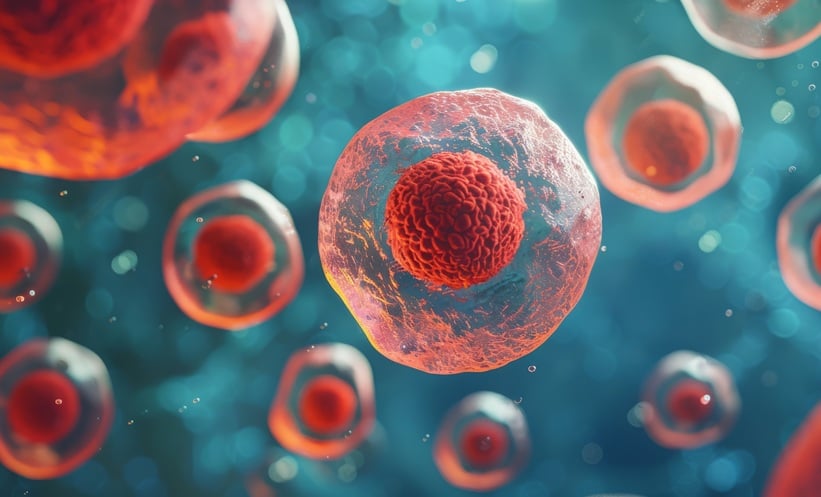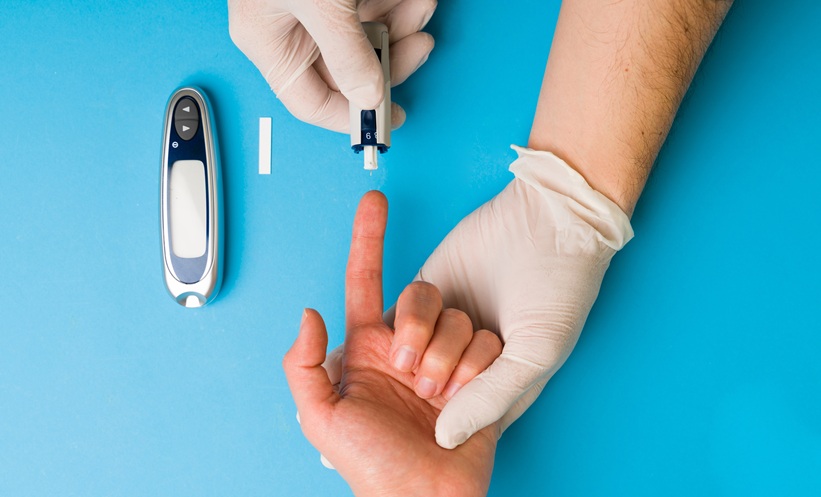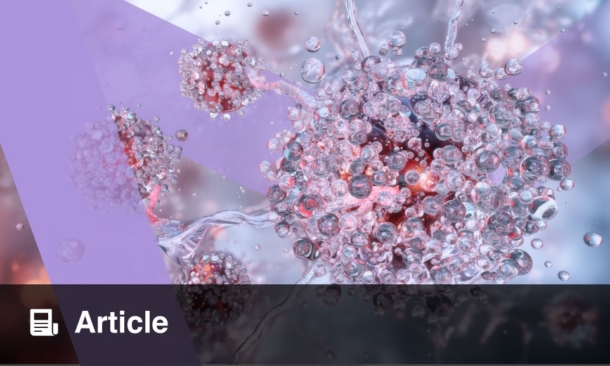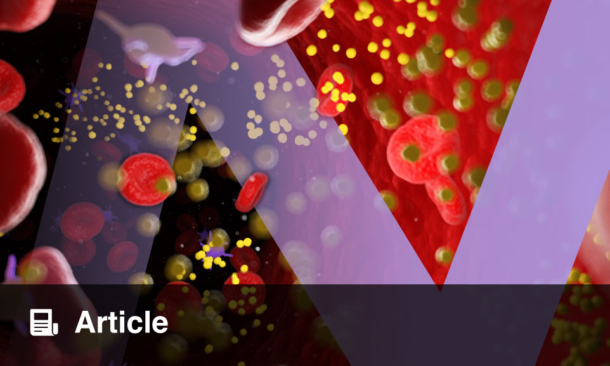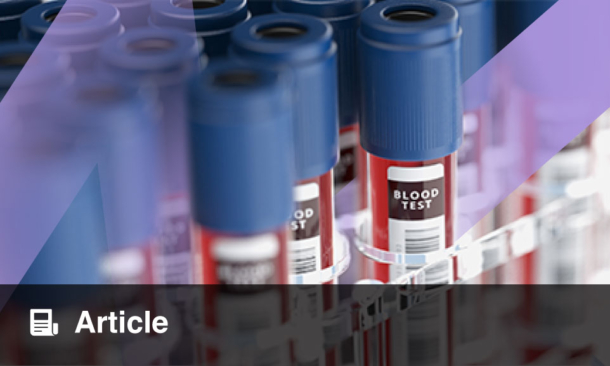Abstract
Type 1 diabetes (T1D) is an autoimmune disease where the immune system mistakenly attacks insulin-producing β-cells. Although genetics plays an important role, environmental factors, especially viral infections, are now seen as key triggers in the development of the disease. Recent studies suggest that persistent viral infections, particularly with enteroviruses, may initiate and maintain autoimmune responses that damage pancreatic β-cells. Mechanisms such as molecular mimicry and epitope spreading are well-known explanations, and while bystander activation has been proposed, it remains debated in recent studies. Viral proteins that resemble human proteins can confuse the immune system, causing it to attack the body’s own tissues. Low-level chronic infections may also disrupt normal immune regulation and increase inflammation, both of which contribute to β-cell destruction. Early detection of viral involvement through biomarkers could allow for earlier intervention and personalised treatment strategies. Moreover, antiviral therapies combined with immunomodulatory approaches may help prevent or delay the onset of T1D in at-risk individuals. Despite these advances, research gaps remain, especially regarding the long-term effects of viral persistence and the exact mechanisms of autoimmune activation. Future research using new technologies such as single-cell RNA sequencing and better imaging tools could provide deeper insights. In conclusion, understanding the role of persistent viral reservoirs in T1D could lead to better diagnostics, preventive strategies, and treatments, offering new hope for managing this complex disease.
Key Points
1. Persistent viral infections, especially enteroviruses, may trigger and sustain autoimmune attacks on pancreatic β-cells through mechanisms such as molecular mimicry, epitope spreading, and chronic inflammation.2. Early detection of viral activity and immune responses could improve prevention and treatment, with potential for antiviral and immunomodulatory therapies to delay or prevent Type 1 diabetes in at-risk individuals.
3. Research gaps remain on how long-term viral persistence drives autoimmunity, and advanced tools like single-cell RNA sequencing and imaging may help uncover key mechanisms for better diagnosis and management.
INTRODUCTION
Type 1 diabetes (T1D) is a chronic autoimmune disease that results from the destruction of insulin-producing β-cells in the pancreas.1 It typically affects children and young adults but can occur at any age.1 Although genetic risk factors, especially variations in the human leukocyte antigen (HLA) region, are important, they alone cannot fully explain the growing incidence of T1D. Environmental factors, particularly viral infections, are believed to act as triggers that initiate the autoimmune response. Enteroviruses, among others, have been strongly linked to the development of T1D.2 Persistent viral infections can interfere with immune regulation through mechanisms like molecular mimicry and epitope spreading, while the role of bystander activation is still debated.3 These processes may confuse the immune system and lead to attacks on pancreatic tissue. Early identification of viral involvement could allow for preventive interventions, while targeted therapies against persistent viruses might reduce the risk of developing the disease. This review explores how persistent viral reservoirs contribute to autoimmune mechanisms leading to T1D and discusses the clinical implications and future research directions.
THE IMMUNE SYSTEM AND AUTOIMMUNE MECHANISMS IN TYPE 1 DIABETES
T1D makes up about 10% of all diabetes cases worldwide, and it is becoming more common in younger people. A small group of patients (less than 10%) are classified as Type 1B, meaning they show no signs of autoimmunity, and the cause of their diabetes is unknown.4 T1D occurs when the immune system destroys the insulin-producing β-cells in the islets of Langerhans. It usually occurs in people who have a genetic risk, and is likely triggered by one or more environmental factors. The disease often develops slowly over months or years, during which the individual has normal blood sugar levels and exhibitsno symptoms.5
T1D often affects people who do not have a family history of the disease. Only about 10–15% of people with T1D have a close family member (first- or second-degree relative) who also has it. However, the lifetime risk is much higher in family members of affected people. About 6% of children, 5% of siblings, and 50% of identical twins develop T1D, compared to only 0.4% of the general population.6 More than 50 genetic risk areas for T1D have been found through genome-wide studies and meta-analyses.7 The most important genes are found in the major histocompatibility complex region, also called the HLA system, located on chromosome 6. Polymorphisms in the HLA region explain 40–50% of the genetic risk for developing T1D. Other important genes include the insulin gene (INS-VNTR, IDDM2) on chromosome 11 and the CTLA-4 geneon chromosome 2.7
Many other genetic areas also play smaller roles in raising the risk of T1D, either by themselves or along with other autoimmune diseases.7 In T1D, the immune system attacks the pancreatic β-cells. Mononuclear cells enter the islets in a process called ‘insulitis’, which over time leads to the loss of most β-cells.8 β-cell death during insulitis likely occurs through direct contact with activated macrophages and T cells, or through substances they release, such as cytokines, nitric oxide, and O2-free radicals.9 In laboratory studies, when β-cells are exposed to IL-1β alone or together with interferon-γ, they show changes similar to those seen in people before they develop diabetes. These changes include higher proinsulin/insulin levels and a weaker first-phase insulin release after glucose stimulation. This happens mainly because IL-1β reduces the ability of insulin granules to dock and fuse with the β-cell membrane.10 If exposure to IL-1β and interferon-γ and/or TNF-α continues for longer, but not with each cytokine alone, the damage becomes worse and leads to β-cell death.10
VIRAL PERSISTENCE ANDIMMUNE INVASION
Viral infections are one possible environmental cause that can lead to autoimmunity. Viruses usually trigger a strong immune response necessary to clear the infection. However, in rare cases, problems with controlling the immune response can cause the body to attack its own tissues. Because viruses can activate lymphoid cells and cause inflammation, they were suspected of causing autoimmune diseases early on.11 Chronic viral infections can lead to or maintain autoimmunity through several ways, including molecular mimicry, bystander activation, and epitope spreading. Viruses have been shown to influence how many autoimmune diseases develop, including systemic lupus erythematosus (SLE), rheumatoid arthritis, Sjögren’s syndrome, herpetic stromal keratitis, coeliac disease, and multiple sclerosis (MS). Different viruses are linked to specific autoimmune diseases. For example, Epstein–Barr virus (a herpesvirus) is often linked to SLE and MS, Coxsackie B virus and rotavirus are linked to β-cell autoimmunity in the pancreas, hepatitis C virus is associated with autoimmune hepatitis and Sjögren’s syndrome, and influenza A virus infection has been linked to autoimmune myocarditis and arthritis. Other viruses like measles, mumps, and rubella have also been studied for their possible roles in triggering or worsening autoimmune conditions.12
VIRAL MECHANISMS LEADINGTO AUTOIMMUNITY
Viruses can promote autoimmune disease through different mechanisms, such as molecular mimicry, bystander activation, and epitope spreading.
Molecular Mimicry
Molecular mimicry was first described in 1964.13 This mechanism occurs when pathogen-derived peptide sequences or structures are sufficiently similar to self-proteins, causing the immune system to mistake the self-protein for the pathogen antigen.14 When this happens, the immune system might accidentally attack the body’s own cells, leading to autoimmune diseases. In T1D, molecular mimicry is believed to help trigger attacks on β-cells in the pancreas. Studies have found viral proteins in the pancreases of patients with T1D, and animal studies show viruses can trigger similar immune attacks.13 Viruses like Coxsackievirus, cytomegalovirus, enteroviruses, and rotavirus have proteins that mimic human proteins like GAD65 and IA-2. This confusion causes the immune system to mistakenly attack its own tissues.15 When viral proteins closely resemble human proteins, a strong and long-lasting immune attack can happen, and is called molecular mimicry.
Bystander Activation
The bystander activation idea suggests that immune cells can become active just because they are near an area of inflammation, even if immune cells are not recognising a pathogen-derived antigen directly. This mostly happens through chemicals called cytokines, like IL-2, which are released during inflammation. However, newer research suggests the term ‘bystander’ might not be correct. There are direct signals that activate immune cells, making it a planned and not a random reaction. Additionally, immune cells that do not recognise anything harmful usually help calm down the immune response rather than worsen it.16 This helps prevent too much inflammation and tissue damage. For example, in some mouse studies of Coxsackievirus infection, local inflammation caused nearby immune cells to become active even without recognising viral proteins. In a study of non-obese diabetic mice infected with Coxsackievirus, high levels of insulitis (auto-reactive T cells already present) were required before infection accelerated diabetes through a bystander activation effect.17 Also, rotavirus infection in non-obese diabetic mice induces activation of bystander lymphocytes via plasmacytoid dendritic cells secreting Type I interferon, which helps activate islet-autoreactive T cells even though the initial trigger maybe non-specific.18
Epitope Spreading to New orHidden Antigens
Epitope spreading happens when the immune system starts by attacking one part of a protein and later attacks other parts or different proteins. This has been seen in autoimmune diseases like MS.19 Sometimes the immune system attacks proteins that have been changed after post-translational modifications or proteins that are normally hidden inside cells. If the thymus did not fully train immune cells to ignore these hidden proteins, there might be more cells ready to attack when they are exposed during inflammation. A clear example of epitope spreading is seen in animal models of T1D, where early immune responses to one β-cell antigen (like insulin or GAD65) later broaden to include others such as IA-2 and ZnT8, as disease develops. Studies have shown that antibodies to IA-2 and ZnT8 often appear after initial autoantibodies in human T1D and that the autoantibody profile expands over time.20-22
MOLECULAR MECHANISM LINKING PERSISTENT VIRAL RESERVOIRS TO TYPE 1 DIABETES
Studies of islets from patients with T1D where enteroviral capsid protein VP1 or RNA was found did not show signs of widespread cell death.23 However, a small number of islet cells might still break down early in infection or later during the disease. Research on small intestine and pancreas samples from patients with new or long-standing T1D showed that enteroviral RNA and VP1 protein were found in a small number of intestinal and pancreatic cells, including pancreatic duct cells and islet β-cells.24 Low amounts of enteroviral RNA were also detected in snap-frozen pancreas samples and in the medium from enriched islet preparations, using sensitive PCR methods that needed up to 40 cycles of amplification.25 These results support the idea of a low-level enterovirus infection in the pancreas of patients with T1D.
However, live viruses could not be grown from the islets using permissive cell lines, suggesting that the viruses were either not fully active or had very slow replication.25,26 This supports the idea that persistent infection exists in the pancreas of patients with T1D.27 Besides causing direct damage to β-cells, viral infections can also lead to insulin resistance by triggering the release of interferons, mainly Type I interferons. These interferons are important for fighting viruses, but if produced for a long time during chronic or repeated infections, they can disrupt insulin signalling.
Interferons activate the JAK-STAT signalling pathway, which interferes with how the body uses glucose, affecting tissues like muscle, liver, and fat.28 Even short-term insulin resistance can add extra stress to β-cells by increasing the demand for insulin. The ‘accelerator hypothesis’ suggests that higher body weight raises insulin demand, putting more stress on β-cells and making them easier targets for autoimmune attacks.29 Additionally, fat buildup in the islets due to obesity can cause β-cell death and contribute to the onset of T1D.
Persistent infections happen when pathogens manage to avoid or weaken the immune system and stay in the body for a long time. These infections are believed to be one of the possible ways that autoimmunity can develop.30 For example, hepatitis C virus can stay in the liver, causing the immune system to attack not only the virus but also liver cells. This leads to ongoing inflammation, production of autoantibodies, liver damage, and autoimmune disease.31 Similarly, long-term infection with Helicobacter pylori is linked to autoimmune gastritis and gastric cancer. In this case as well, the immune system attacks both the bacteria and the stomach cells, leading to chronic inflammationand autoimmunity.32
Persistent infections can also cause autoimmunity by activating many B cells at once (polyclonal activation), leading to the production of autoantibodies. For instance, chronic Epstein–Barr virus infection has been linked to SLE because the virus causes B cells to become overly active and produce harmful antibodies.33 In addition, persistent infections can activate Toll-like receptors (TLR), which detect signs of infection. Activation of TLRs causes the release of inflammatory signals like cytokines and chemokines, which leads to long-term inflammation, tissue damage, and possibly autoimmune disease.34
Mostly, these processes happen through local production of cytokines like IL-2 and other immune system activators. While it is known that inflammation can ‘license’ or activate antigen-presenting cells and trigger immune responses through pathways like TLRs, calling this a ‘bystander’ effect may not be correct in present times. First, if cells are directly activated, it is not a bystander event but a targeted response. Second, there is no strong evidence that adaptive immune cells, which do not recognise specific antigens, can accidentally get activated. Instead, studies show that T cells without matching antigens tend to work as regulators, helping to reduce inflammation.16 This makes sense because, without a driving antigen, the immune system usually shuts down instead of growing stronger. In autoimmunity, the problem is different; self-antigens wrongly become the main target. Therefore, the authors believe that random bystander activation does not play a major role in starting autoimmunity.34
THE ROLE OF PERSISTENT VIRAL RESERVOIRS IN DRIVING AUTOIMMUNE MECHANISMS LEADING TO TYPE 1 DIABETES
The early detection of viral involvement in T1D is an important area for clinical research. Studies suggest that certain viral infections, especially those caused by enteroviruses, may play a key role in the onset of T1D. For example, finding specific viral RNA in the pancreatic tissue of patients with T1D supports the concept that persistent viral reservoirs can affect autoimmune processes.35 Identifying these viral markers could help in earlier diagnosis, allowing timely action before symptoms appear. This could involve detecting specific biomarkers linked to viral infections, such as viral RNA or antibodies against viral proteins in blood samples.36 Using these markers, doctors could monitor people at high risk more effectively and step in sooner. It is also important to develop biomarkers that can clearly show which patients are at risk because of persistent viral reservoirs. Measurements of viral load or specific immune responses to viral proteins could help classify patients and guide monitoring plans.37 These diagnostic tools could not only improve the prediction of T1D, but also support personalised treatment plans that target viral triggers of autoimmunity.
Targeting viral reservoirs offers a promising path for preventing or delaying the start of T1D. Antiviral treatments have shown potential in changing the immune response and lowering the chances of T1D in people at risk. For instance, giving antiviral medications during the early stages of infection may reduce the risk of later autoimmune reactions.38 This highlights the need to include antiviral strategies in efforts to prevent T1D. Therapies aimed at removing persistent viruses could lower the inflammation that leads to the destruction of β-cells.39 Along with antiviral treatments, immunomodulatory approaches could help manage the autoimmune processes triggered by viral infections. For example, therapies that adjust the immune response may help the body tolerate its own β-cells again, reducing autoimmune attacks.40 Immunomodulatory therapies, such as monoclonal antibodies that target certain immune pathways, could also help calm the autoimmune reaction caused by viruses.41 A combined approach using both antiviral and immunomodulatory therapies might offer a strong new way to manage T1D.
The COVID-19 pandemic raised questions about whether SARS-CoV-2 changed the number of new diabetes cases, including T1D. Several reports from different countries found more new T1D cases in children during the pandemic years. For example, registry and hospital data from Europe and other places showed increases in T1D diagnoses and more severe presentation (diabetic ketoacidosis) in children during 2020–2021.42,43 Large cohort studies and pooled analyses also suggest an association between prior COVID-19 infection and higher risk of new diabetes (both Type 1 and 2), but results are mixed and may depend on study design and follow-up time. A pooled analysis found a higher overall risk of new diabetes after COVID-19, with subgroup data that include an increased risk estimate for T1D.44,45 The possible mechanisms are debated. Some lab and animal studies show that SARS-CoV-2 can damage the pancreas and impair islets, suggesting a direct effect on β-cells.46 Other studies find low or variable expression of key viral entry molecules (ACE2) on human β-cells, so direct infection is not certain.47 Immune activation, systemic inflammation, and metabolic stress during or after infection could also trigger diabetes, or the pandemic’s social effects (delayed care, less exercise, weight gain) could change disease detection and severity. Thus, current evidence supports a possible link between COVID-19 and increased diabetes risk, but the data do not yet prove that SARS-CoV-2 directly causes sustained new T1D in most patients. More long-term, well-designed studies are needed to separate direct viral effects from indirect or social causes.46-48
Identifying which patients would benefit most from testing for viral reservoirs or viral markers is an important future direction. People who have a strong family history of T1D or who test positive for multiple islet autoantibodies but are not yet diabetic may gain the most from such testing. Detecting viral RNA, proteins, or specific immune responses linked to enteroviruses in these high-risk individuals could help predict who is likely to develop T1D.27,35 Testing may also be useful for patients with recent-onset T1D, especially within the first year after diagnosis, when viral material is more likely to be found in pancreatic or intestinal tissues.23,24 Detecting viral evidence in this group can help confirm the presence of persistent infection and guide early antiviral or immune-modifying treatments. In addition, monitoring children or adolescents with recent viral infections, such as Coxsackievirus B or rotavirus, who later develop islet autoantibodies may improve understanding of disease progression and timing of intervention.12,29 Early screening for viral markers could be most useful for (1) genetically at-risk individuals with islet autoantibodies, (2) newly diagnosed patients, and (3) children recovering from viral infections known to affectpancreatic tissue.
RESEARCH GAPS AND FUTURE DIRECTIONS
Even with progress, many research gaps remain in understanding how viral reservoirs relate to T1D. One major gap is the lack of long-term studies on how persistent viruses affect the immune system over time. Learning exactly how viral reservoirs cause autoimmunity is crucial for creating targeted treatments.49 New technologies, like single-cell RNA sequencing and advanced imaging, offer powerful tools to study viral reservoirs and their role in T1D. These methods could help find specific viruses involved and explain how they interact with the immune system.50 In addition, teamwork among virologists, immunologists, and doctors will be important to close these knowledge gaps and turn research into real-world treatments.
CONCLUSION
Persistent viral infections may play a central role in triggering and maintaining the autoimmune processes that lead to T1D. Through molecular mimicry, bystander activation, and epitope spreading, viruses like enteroviruses can initiate immune attacks on pancreatic β-cells. Research has shown that viral RNA and proteins can be detected in the pancreatic tissues of patients with T1D, supporting the idea of a long-term, low-level infection. Identifying biomarkers for viral involvement could greatly improve early diagnosis and allow for preventive treatments before full disease development. In addition, combining antiviral therapies with immunomodulatory approaches offers a promising strategy for stopping or delaying β-cell destruction. However, many questions remain about the exact ways viruses drive autoimmunity and how persistent infections affect the immune system over time. Future studies using advanced technologies and strong collaboration between scientists and clinicians are needed to close these gaps. Overall, a deeper understanding of viral contributions to T1D could lead to more personalised and effective prevention and treatment strategies, offering new hope for individuals at risk of developing this disease.

